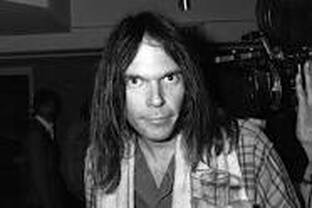GEARING UP FOR VACCINE TRIALS If there is a silver lining to the flawed U.S. response to the corona-virus pandemic, it is this: The relatively high number of new cases being diagnosed daily — upward of 20,000 — will make it easier to test new vaccines. |
To determine whether a vaccine prevents disease, the study’s subjects need to be exposed to the pathogen as it circulates in the population. Reopening the economy will likely result in the faster spread of the coronavirus and therefore more opportunities to test a vaccine’s efficacy in trial subjects.
Under a proposal under discussion by a committee set up by the National Institutes of Health, each of four or five experimental vaccines would be tested on about 20,000 trial participants with a placebo group of 10,000 for each vaccine. Some 50 U.S. medical centers — and perhaps an equal number overseas — would participate in these trials.
On May 18, Moderna, the biotech company, reported promising results in the first eight of 45 people enrolled in an initial test of the safety and immune responses to its vaccine.
The company is running animal and human studies simultaneously and plans to invest hundreds of millions of dollars to build laboratories where the vaccine will be produced even before it’s approved. The Food and Drug Administration has promised an accelerated review of Moderna’s vaccine, which works by injecting pieces of synthetic viral RNA into the body to stimulate an immune response to the virus.
Running a trial of the size and speed contemplated by the NIH will be an immense undertaking. Just setting up trial locations and getting common consent and data-entry forms into shape usually take months. Enrolling 30,000 people for a single vaccine trial is a big challenge.
In addition, defining success in a vaccine against COVID-19 will be no simple matter. As scientists design vaccine trials, they first have to set the “endpoints” that determine success or failure. Death? Length of illness? Hospitalization? Number of days in which a subject is infectious?
If there is little virus circulating where a trial is being run, even a vast study won’t prove anything. On the other hand, if a vaccine trial had started in early April in New York City, where roughly 10,000 cases a day were reported for weeks, 30,000 participants would have been plenty to show whether the vaccine protected against the disease.
In all likelihood, the big NIH trials will focus on rates of infection as well as clinical symptoms such as fever and cough. To discover whether the vaccine prevents severe disease, which is relatively rare, is harder. COVID-19, according to one account, kills about 0.6% of those it infects, while perhaps six times that many require hospitalization.
People who take part in a trial will be given clear instructions to protect themselves against infection through social distancing, face masks, frequent hand-washing and so on. That will lower the number of people infected during the study.
“You’d have to ask all the people enrolled in a trial to practice good hygiene,” said Paul Offit, director of the Vaccine Education Center at Children’s Hospital of Philadelphia. “You don’t want them to get infected — but you do.”
When Jonas Salk announced the successful trial of his polio vaccine in 1955, the nation celebrated a vaccine that could virtually eliminate a deadly infectious disease overnight. A new coronavirus vaccine may not provide that kind of overnight success. Instead, it may be more akin to the flu vaccine, which reduces the risk or severity of the illness but requires a new shot each year.
Vaccinating 20,000 people in a trial can reveal whether a vaccine is clearly dangerous to a general population. But when 200 million receive the same vaccine, less common side effects could still affect thousands. Botched batches of polio vaccines released after Salk’s trial permanently paralyzed 200 people and killed 10. Early vaccines against measles caused tens of thousands of cases of grave illness in the 1960s.
Maurice Hilleman, the vaccine pioneer who developed successful vaccines against measles, mumps, hepatitis A and B and other diseases, once said he never breathed a sigh of relief “until the first 3 million doses” had been delivered.
Unexpected problems naturally bedevil quick rollouts, as this one will almost certainly be as the nation searches for a way to check a pandemic that is killing tens of thousands of Americans and paralyzing the economy. But as Gregory Poland, the leader of Mayo Clinic’s vaccine research, said, “There is an irresolvable tension of speed versus safety.”



 RSS Feed
RSS Feed